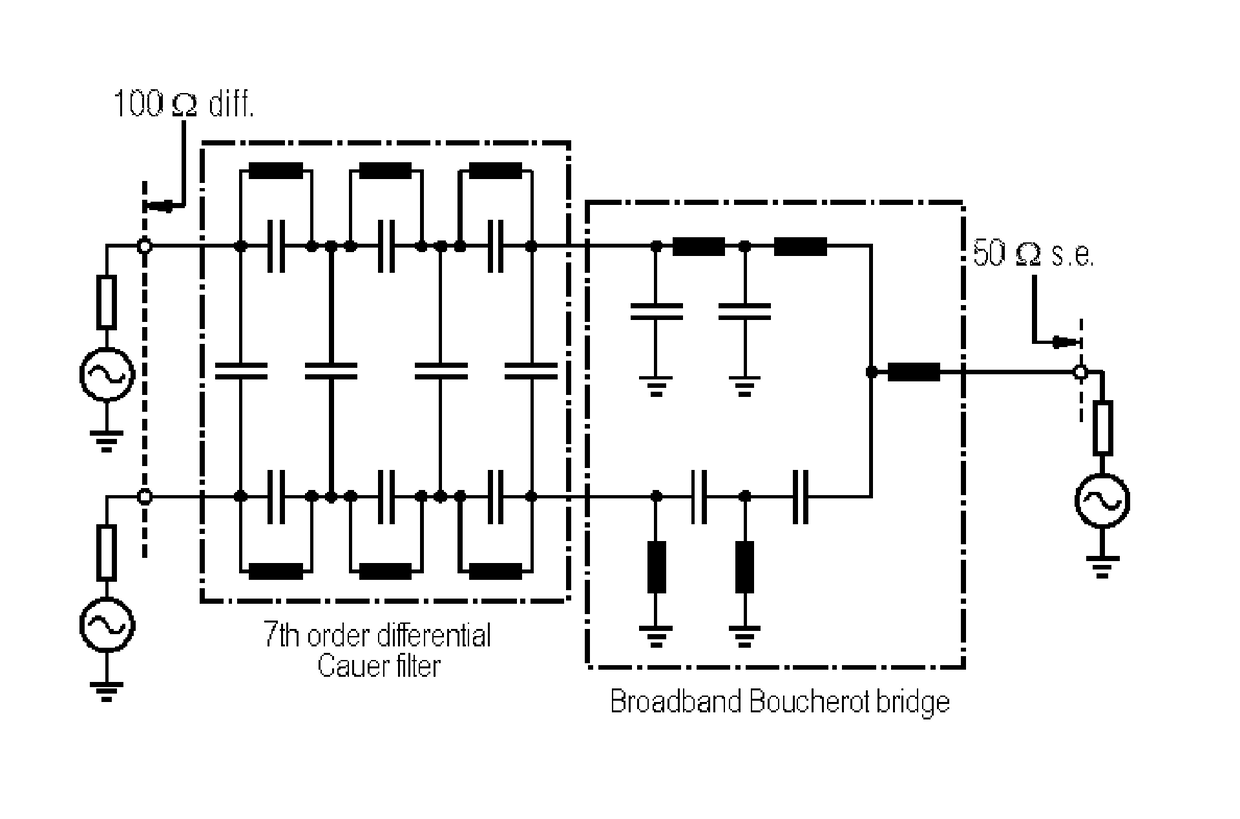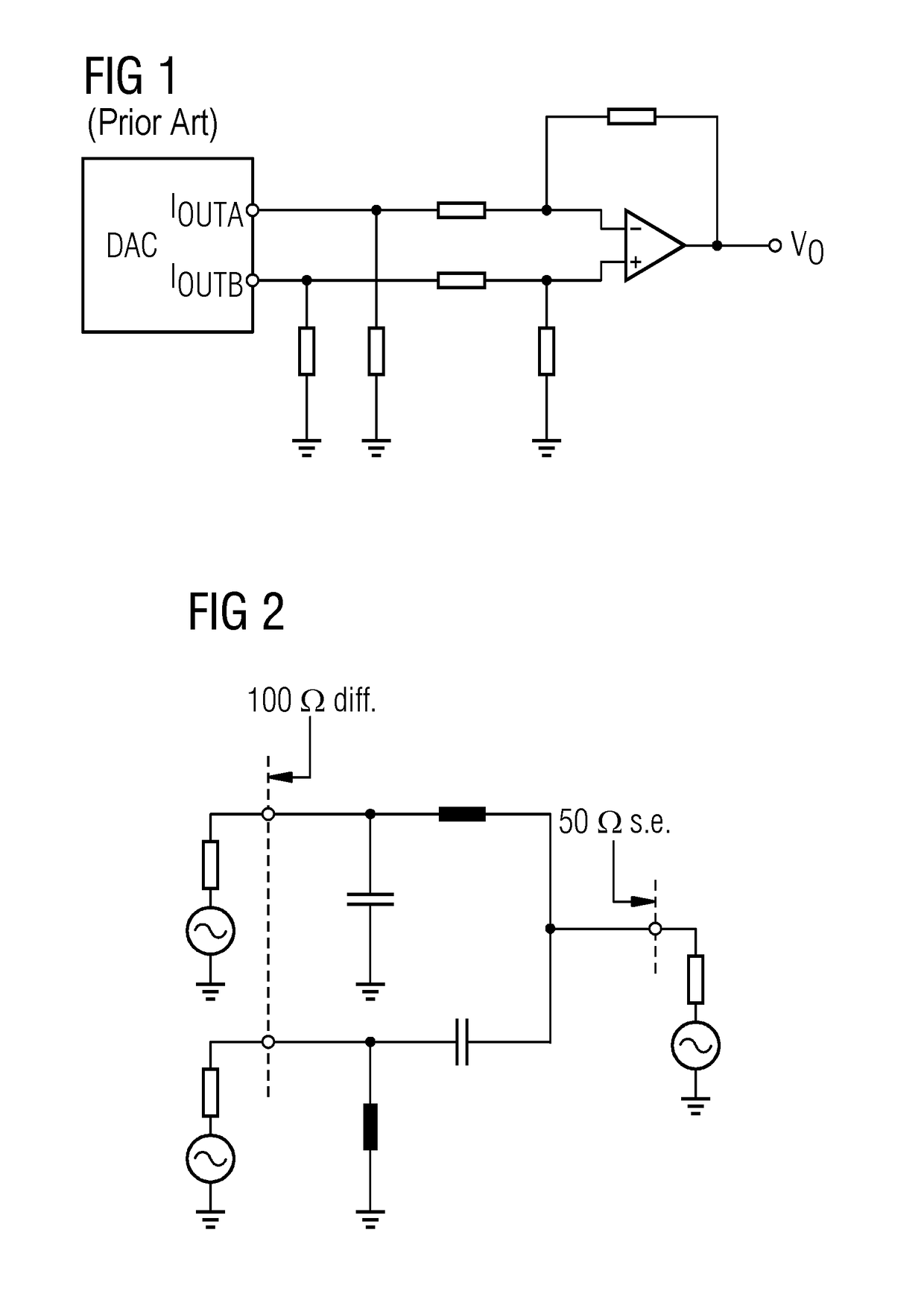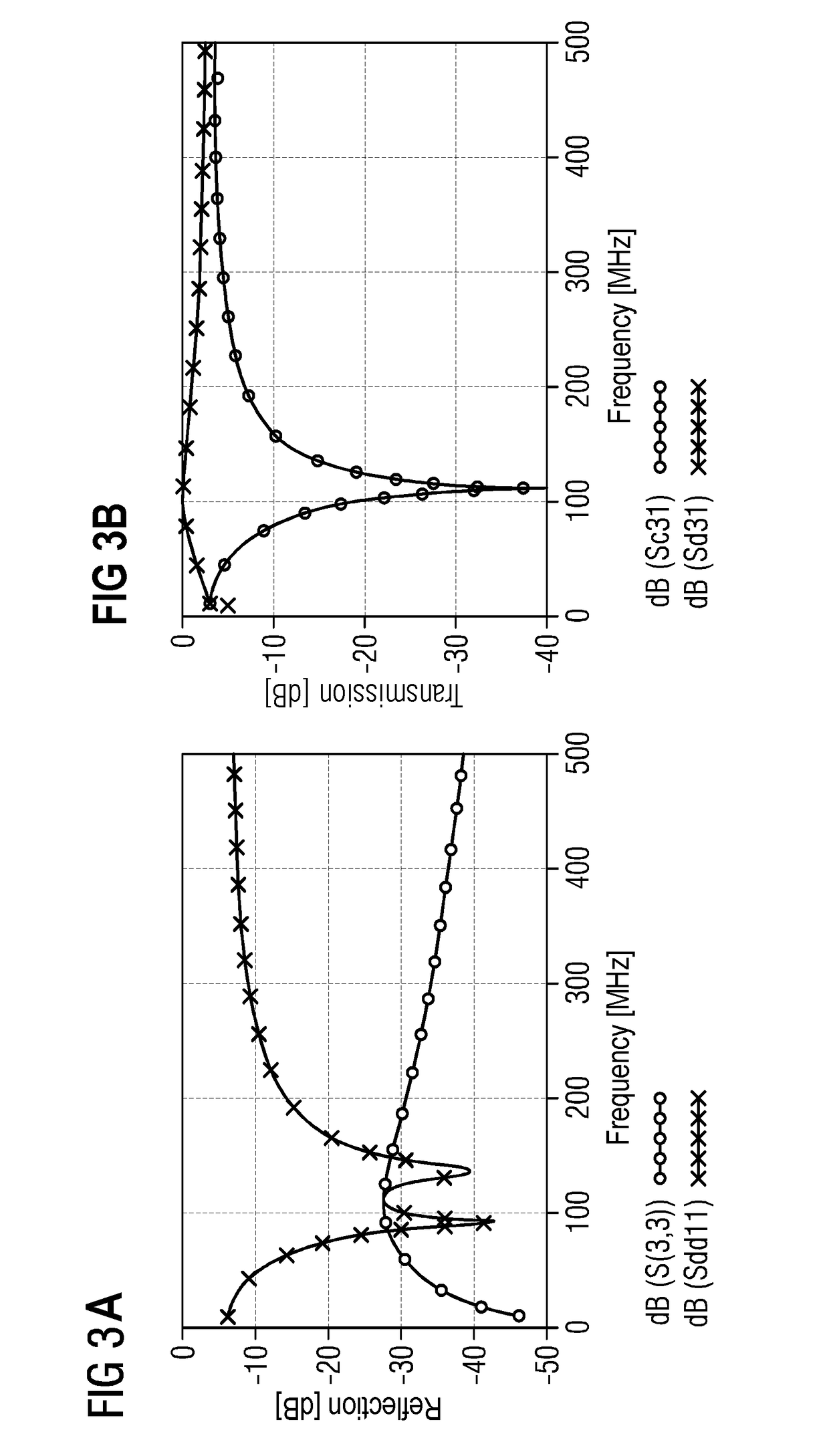Converting a symmetrical input signal of a magnetic resonance arrangement into an asymmetrical output signal
a magnetic resonance arrangement and input signal technology, applied in the direction of impedence networks, multiple-port networks, electrical apparatus, etc., can solve the problems of ferrite failure in magnetic fields, relatively expensive and difficult production, etc., to facilitate the use of circuit and method in magnetic resonance arrangements, simple and cost-effective arrangement, and wide bandwidth
- Summary
- Abstract
- Description
- Claims
- Application Information
AI Technical Summary
Benefits of technology
Problems solved by technology
Method used
Image
Examples
exemplary embodiment 200
[0048]FIG. 2 is a schematic circuit diagram of an exemplary embodiment 200 of an arrangement for converting a symmetrical signal into an asymmetrical signal using a simple Boucherot bridge. In comparison with the operational amplifier with resistive feedback shown in FIG. 1, the FIG. 2 arrangement has the advantage, inter alia, of better noise properties. The FIG. 2 arrangement takes into account the very high signal dynamics in magnetic resonance arrangements by providing that the noise figure of the components to be used cannot significantly contribute to the total signal-to-noise ratio (SNR).
[0049]The structure and the effect of the circuit are as follows.
[0050]Port 1201 produced by the parallel circuit is used as the output in this embodiment, and two other ports 2202 and 3203 are used as the input. On account of the purely passive structure, signals may also flow in the opposite direction, with the result that the terms “input” and “output” and the functions associated therewit...
exemplary embodiment 400
[0058]FIG. 6 is a schematic circuit diagram of a third exemplary embodiment 400 for converting a symmetrical signal into an asymmetrical signal using a three-stage Boucherot bridge. An advantage of this configuration is that further field strengths may be taken into account therewith since the bandwidth increases with each stage. However, a bandpass filter effect that is inherent in the Boucherot bridge also increases. Therefore, embodiments with additional stages are also provided for applications in which further deterioration in the common mode rejection is permissible. However, a balanced ratio prevails in this respect in the circuit shown and allows this three-stage Boucherot bridge to achieve an optimum performance without additional connection.
[0059]In this respect, FIG. 7A-FIG. 7B depict graphs of the signal profile of the S parameters of the arrangement from FIG. 6. As illustrated, the bandwidth is increased both in the transmission (FIG. 7B) and in the reflection (FIG. 7A)...
exemplary embodiment 500
[0060]In order to avoid this disadvantage, for example, the two-stage circuit 300 shown in FIG. 4, as well as the other stage embodiments 200 and 400 described above, may be optimized with the aid of a BPF in the form of a Cauer filter, of the seventh order in the example. This results in the schematic circuit diagram of a fourth exemplary embodiment 500 for converting a symmetrical signal into an asymmetrical signal using a bandpass-optimized two-stage Boucherot bridge, as shown in FIG. 8.
[0061]One of the advantages of bandpass filtering is the filtering of alias bands that may result during operation of the magnetic resonance arrangement. For example, a first alias band is at fmax of 195 MHz for a clock of 160 MHz and a maximum frequency fc of 125 MHz. For the unbalancing in this embodiment, low-pass filtering would be needed at the transmission frequency of fmax and a minimum blocking frequency of 2fc−fmax.
[0062]Filtering of alias bands is advantageously achieved using an upstrea...
PUM
 Login to View More
Login to View More Abstract
Description
Claims
Application Information
 Login to View More
Login to View More - R&D
- Intellectual Property
- Life Sciences
- Materials
- Tech Scout
- Unparalleled Data Quality
- Higher Quality Content
- 60% Fewer Hallucinations
Browse by: Latest US Patents, China's latest patents, Technical Efficacy Thesaurus, Application Domain, Technology Topic, Popular Technical Reports.
© 2025 PatSnap. All rights reserved.Legal|Privacy policy|Modern Slavery Act Transparency Statement|Sitemap|About US| Contact US: help@patsnap.com



